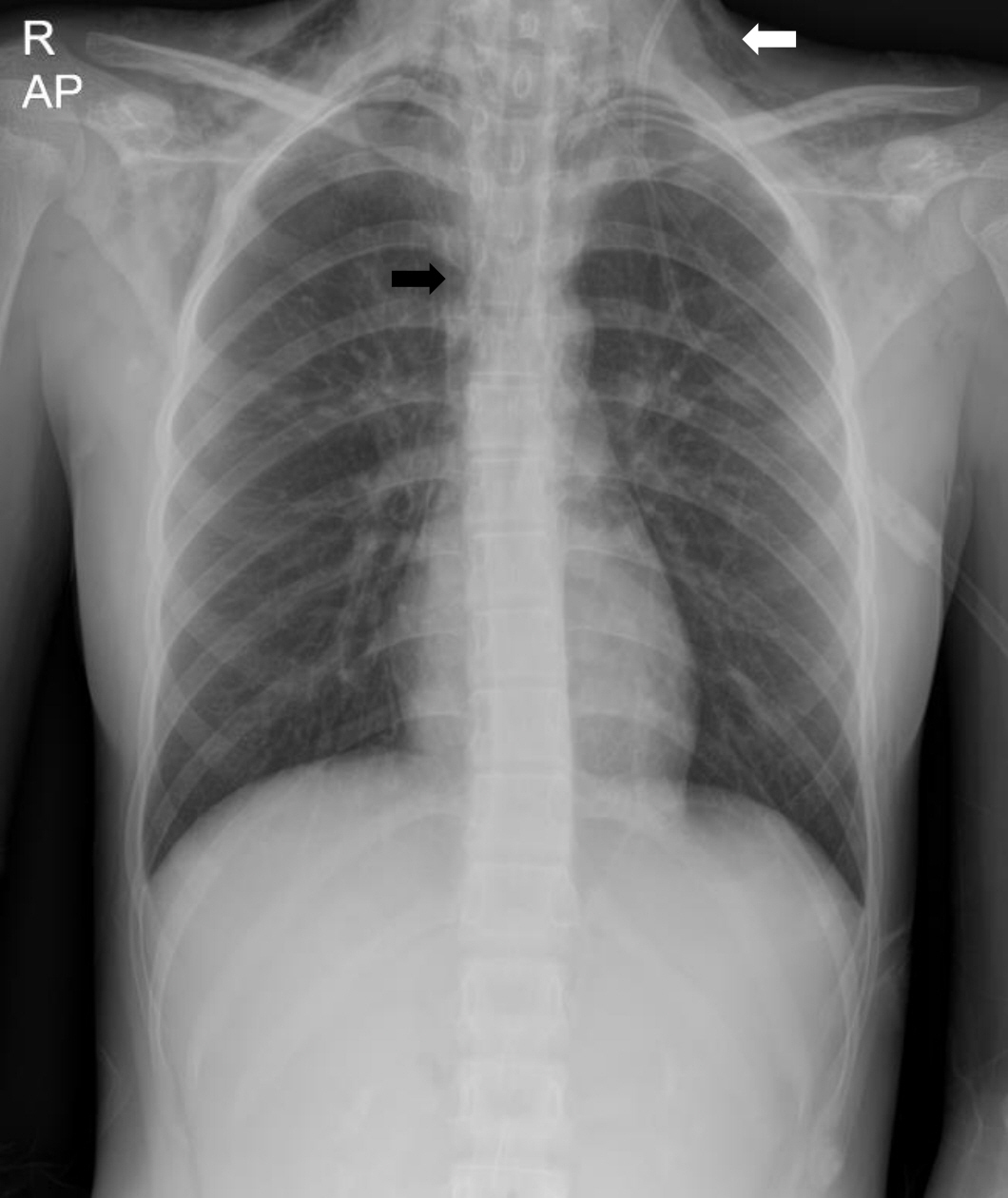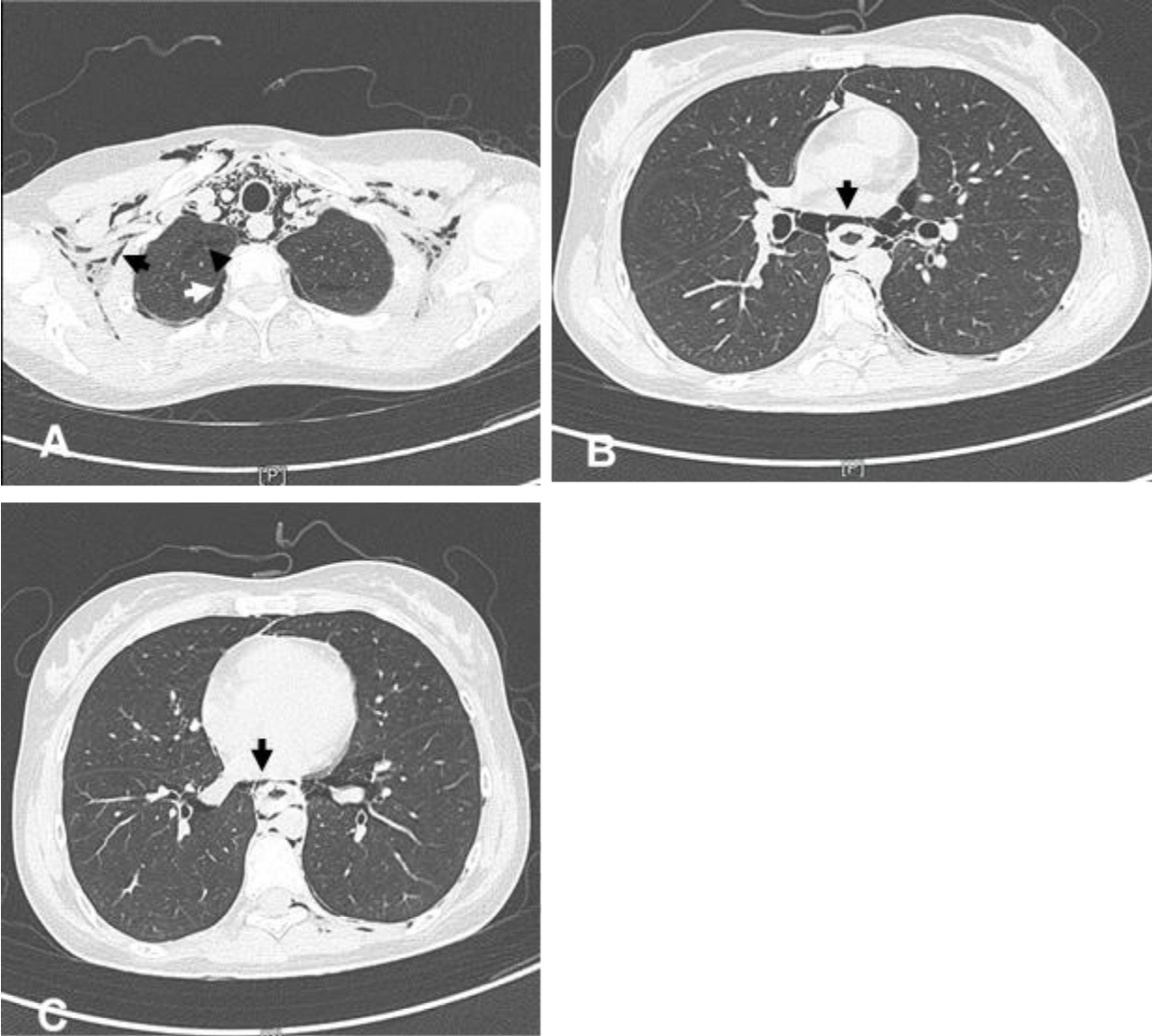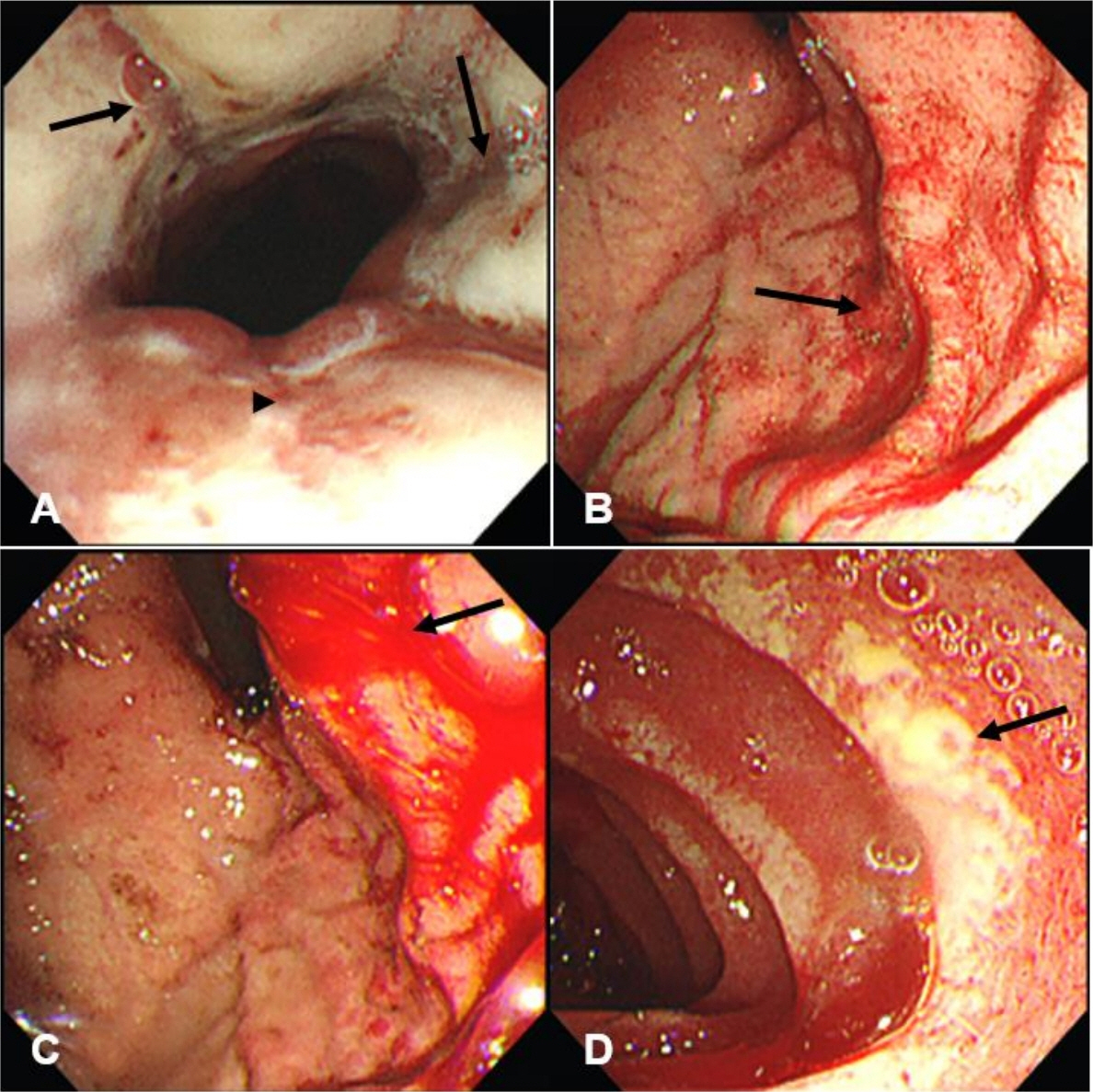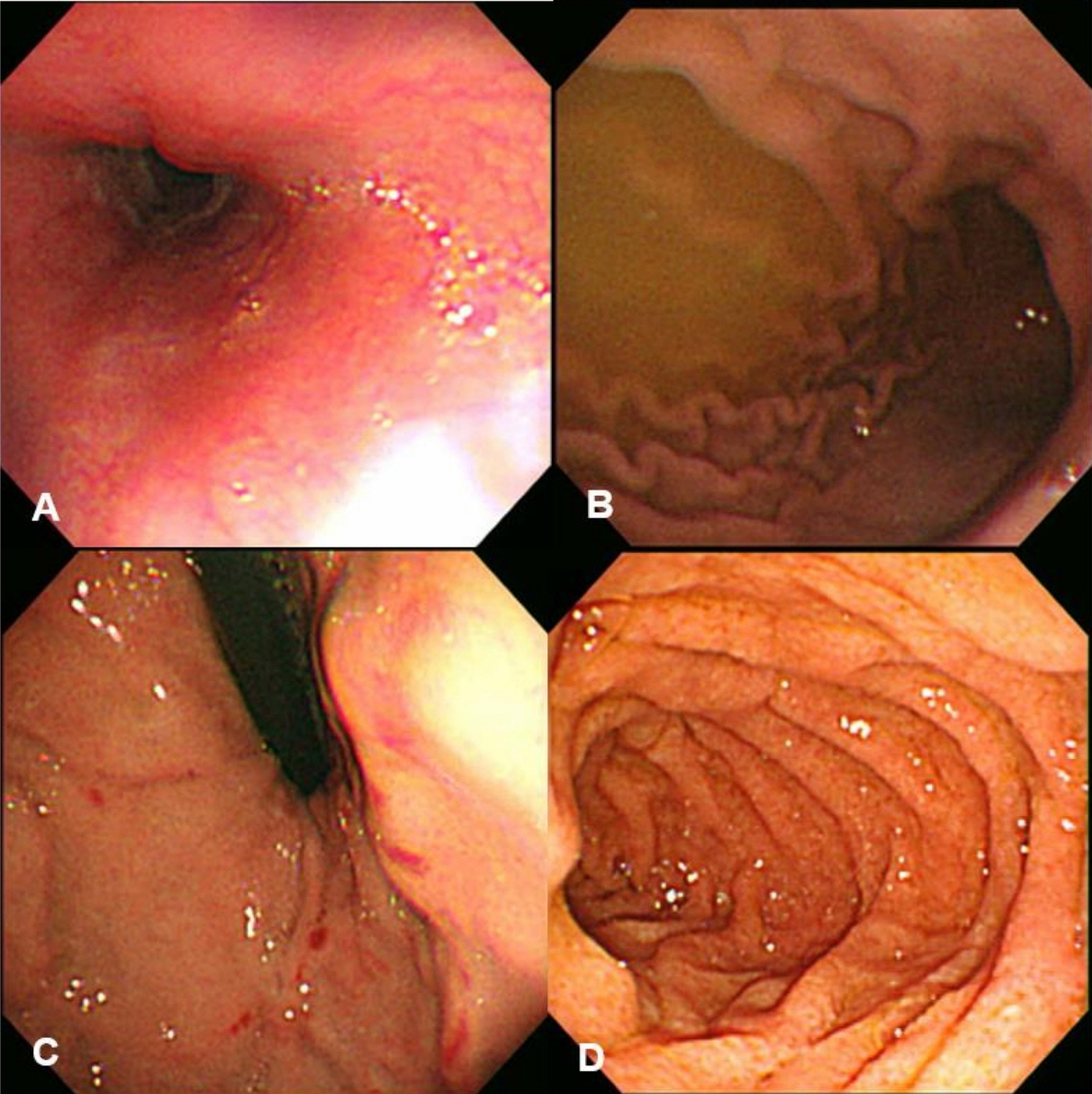Pediatr Emerg Med J.
2023 Jan;10(1):36-40. 10.22470/pemj.2022.00591.
A case of esophageal perforation caused by suicidal caffeine poisoning in a teenager
- Affiliations
-
- 1Department of Pediatrics, Hanyang University Guri Hospital, Hanyang University College of Medicine, Guri, Republic of Korea
- 2Department of Thoracic and Cardiovascular Surgery, Hanyang University Seoul Hospital, Hanyang University College of Medicine, Seoul, Republic of Korea
- 3Department of Pediatrics, Hanyang University Seoul Hospital, Hanyang University College of Medicine, Seoul, Republic of Korea
- KMID: 2538081
- DOI: http://doi.org/10.22470/pemj.2022.00591
Abstract
- Spontaneous esophageal perforation (also known as Boerhaave syndrome) is associated with sudden increase in intra-esophageal pressure by vomiting, coughing or straining at stool. This case describes a 13-year-old girl who developed the perforation after consuming 270 mg/kg of caffeine tablets for a suicide attempt. Presumably, the perforation was caused primarily by caffeine-induced severe vomiting, and secondarily by caffeine-induced gastric acid secretion with smooth muscle relaxation and by the large amount of caffeine-induced sudden increase in intra-esophageal pressure.
Keyword
Figure
Reference
-
References
1. Rentea RM, St Peter SD. Neonatal and pediatric esophageal perforation. Semin Pediatr Surg. 2017; 26:87–94.2. Guttman OR, Zachos M. Drug-induced esophageal injury with an occult vascular ring. Paediatr Child Health. 2011; 16:554–6.3. Boyce HW Jr. Drug-induced esophageal damage: diseases of medical progress. Gastrointest Endosc. 1998; 47:547–50.4. Szeremeta M, Sackiewicz A, Drobuliak P, Reszeć-Giełażyn J, Niemcunowicz-Janica A. Rare complications of fatal caffeine intoxication. Forensic Sci. 2022; 2:144–54.5. Lieu MT, Layoun ME, Dai D, Soo Hoo GW, Betancourt J. Tension hydropneumothorax as the initial presentation of Boerhaave syndrome. Respir Med Case Rep. 2018; 25:100–3.
- Full Text Links
- Actions
-
Cited
- CITED
-
- Close
- Share
- Similar articles
-
- A Case of Esophageal Perforation during Endoscopic Variceal Ligation
- The Effects of Caffeine and Aminophylline on co Poisoning Incuced Activity of Mouse
- Thoracoscopic Surgery for Esophageal Perforation and Achalasia: Two cases report
- Iatrogenic esophageal perforation in a newborn: A case report
- Esophageal Perforation Due to Swallowed Toothbrush





